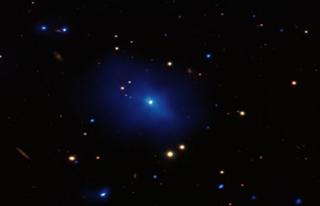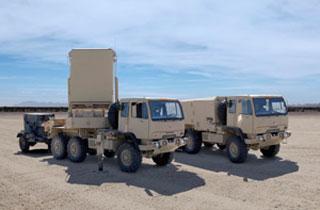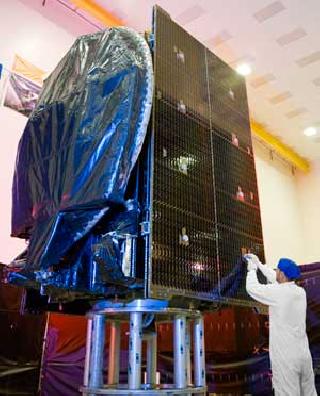
Composite image of the galaxy cluster surrounding quasar 3C 186. Photo: X-ray: NASA/CXC/SAO/A.Siemiginowska et al. Optical: AURA/Gemini Obs.
WASHINGTON (BNS): NASA's Chandra X-ray Observatory has recently observed an unusual galaxy cluster that contains a bright core of relatively cool gas surrounding a quasar called 3C 186.
This is the most distant such object yet observed, and could provide insight into the triggering of quasars and the growth of galaxy clusters.
The composite image of the cluster surrounding 3C 186 includes a new, deep image from Chandra (blue) showing emission from gas surrounding the point-like quasar near the centre of the cluster.
Chandra X-ray spectra show that the temperature of the gas drops from 80 million degrees on the outskirts of the cluster down to 30 million in the core. This drop in temperature occurs because intense X-ray emission from the gas cools it. Optical data from the Gemini telescope in yellow show the stars and galaxies in the field of view, according to a NASA news report.
3C 186 is about 8 billion light years away from Earth, making it the most distant known galaxy cluster to contain a prominent cooling core. Because of its large distance the cluster is being seen when the Universe is relatively young, at less than half its current age.
This galaxy cluster is also the most distant ever seen to contain a quasar. Only one other galaxy cluster containing a bright quasar has had a detailed study of its X-ray emitting gas, and this is located much closer to the Earth than 3C 186. In principle, the cooling gas near 3C 186 can provide enough fuel to support the growth of the supermassive black hole, the power source for the quasar, the report added.
 Previous Article
Previous Article Next Article
Next Article











The Indian Air Force, in its flight trials evaluation report submitted before the Defence Ministry l..
view articleAn insight into the Medium Multi-Role Combat Aircraft competition...
view articleSky enthusiasts can now spot the International Space Station (ISS) commanded by Indian-American astr..
view article